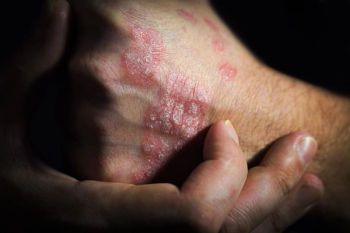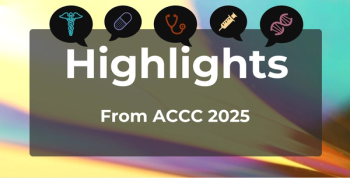
Deuruxolitinib Shows Greatest Short-Term Efficacy Among JAKis for Severe Alopecia Areata
Key Takeaways
- Deuruxolitinib 8 mg BID shows superior short-term efficacy among approved oral JAK inhibitors for severe alopecia areata.
- The study addresses a critical gap in comparative effectiveness data, previously limited by a lack of head-to-head RCTs.
Deuruxolitinib 8 mg BID was found to be the most effective oral JAK inhibitor for severe alopecia areata in a new meta-analysis.
This article was originally published on
Deuruxolitinib 8 mg twice daily shows the greatest short-term efficacy among approved oral Janus-Kinase (JAK)-inhibitors for
These data on JAK inhibitor use for severe alopecia resulted from a new systematic review and meta-analysis published in
Previous meta-analyses had also not excluded data on certain oral JAK inhibitors or incorporated data from agents and dosing regimens that were investigational, abandoned, shown not to be effective, or linked with safety profiles deemed unacceptable.2
“This focused research fills a critical knowledge gap in the literature by comparing the relative efficacy of oral JAKIs using advanced Bayesian statistical techniques and anchor placebo-controlled data,” the investigators wrote.1 “The results of this analysis are intended to inform evidence-based clinician decision-making and treatment guidelines and establish future research priorities, particularly for optimizing dose selection and long-term management of patients with severe [alopecia areata].”
Design and Findings on JAKi
The investigative team's systematic review (CRD420251116775) also included a meta-analysis of available RCTs assessing US Food and Drug Administration (FDA), European Medicines Agency (EMA), or Medicines and Healthcare Products Regulatory Agency (MHRA)–approved oral JAK inhibitors (JAKis) for the management of severe alopecia areata.
Research deemed eligible by the team had involved subjects with baseline scalp hair loss and data that reported 24-week outcomes. Interventions included baricitinib 2 mg as well as 4 mg once per day (QD), ritlecitinib 50 mg QD, and deuruxolitinib 8 mg twice per day (BID), each compared against placebo.
The investigators carried out a comprehensive search of MEDLINE, Embase, and Cochrane CENTRAL, looking at research from database inception through July 2025. They also implemented ClinicalTrials.gov and accessed abstracts from major dermatology conference proceedings. Screening of available data was conducted by 2 independent reviewers, and any disagreements were resolved through discussion or by a third reviewer.
Risk of bias for included trials was assessed by the Cochrane Risk of Bias 2.0 tool. In the team's network meta-analysis (NMA), only studies reporting placebo-controlled 24-week outcomes on SALT ≤ 10 and ≤ 20 were eligible for inclusion. The feasibility for any indirect comparisons was determined by the investigative team through assessment of clinical and methodological similarity across studies. Research that did not meet similarity assumptions or lacked network connectivity was excluded from the primary NMA.
Inclusion of 7 RCTs comprising 4560 participants took place, and the authors determined deuruxolitinib 8 mg BID showed statistically significant superiority over baricitinib 2 mg and 4 mg for both SALT endpoints. The investigators also highlighted comparisons with ritlecitinib 50 mg, which favored deuruxolitinib directionally.
However, they did note differences were shown not to be statistically significant in the NMA and ML-NMR models. MAIC analyses suggested greater odds of SALT ≤ 20 attainment via deuruxolitinib compared to baricitinib 2 mg (OR, 71.55) and compared to ritlecitinib (OR, 18.27). Surface under the cumulative ranking (SUCRA) rankings consistently placed deuruxolitinib as the most effective JAK inhibitor.
Among currently approved oral JAKis, deuruxolitinib 8 mg BID appeared in the analysis to provide the greatest short-term efficacy for those living with severe disease. These findings may allow for preliminary guidance for treatment selection, yet the investigative team highlighted the need to consider these data as exploratory until further confirmation is available.
“Despite limitations inherent to indirect comparisons and short-term follow-up, this study fills a critical gap in comparative effectiveness data for approved JAKIs and provides timely, clinically relevant insights for guiding treatment decisions in [alopecia areata],” they wrote.1 “Future research must address long-term outcomes and head-to-head comparisons to build upon these foundational results.”
References
1. A Babul, D Mehta, Y Soliman, et al. Comparative efficacy of Janus kinase inhibitors indicated for severe alopecia areata: a Bayesian network meta-analysis and matching-adjusted indirect comparison. J Dermatol. Published online October 11, 2025. doi:10.1111/1346-8138.17959.
2. Yan T, Wang T, Liu N, et al. Comparative efficacy and safety of JAK inhibitors in the treatment of moderate-to-severe alopecia areata: a systematic review and network meta-analysis. Front Pharmacol. 2024;15:1372810. doi:10.3389/fphar.2024.1372810
Newsletter
Stay ahead of policy, cost, and value—subscribe to AJMC for expert insights at the intersection of clinical care and health economics.












































